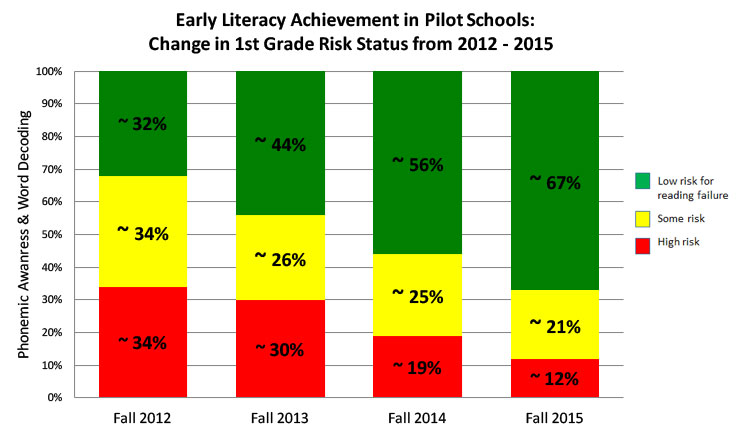Four years into a pilot initiative for giving intensive reading instruction to the Connecticut children who need it most, the directors of the initiative will present data showing they have achieved dramatic results, especially among the students who have participated over several years.
The briefing, entitled “Narrowing the Achievement Gap: Connecticut’s Successful Reading Plan,” will run from 9 a.m. to noon on Friday, April 22, in Room 1-A of the Legislative Office Building, at 300 Capitol Avenue in Hartford, Conn. The event is free and open to the public, though seating is limited. It is hosted by the Commission on Children, the state legislature’s Black and Puerto Rican Caucus, and the state Department of Education.
With 50 percent of African-American, Hispanic, and economically disadvantaged students in Connecticut not reading at proficiency levels, the governor and General Assembly approved legislation in 2012 that established a pilot initiative for employing the latest science in reading instruction to help the students most in need of intervention. The resulting CT K-3 Reading Model includes a school-wide reading improvement plan, a comprehensive literacy assessment system, high-quality classroom reading instruction, evidence-based supplemental intensive reading interventions, ongoing coaching and targeted professional development for teachers, and an emphasis on forging partnerships with parents.
This year, 34 schools in 14 districts across Connecticut participated in the initiative and are implementing the CT K-3 Reading Model. Two of the experts leading the initiative — Michael Coyne, professor and co-director of the Center for Behavioral Education & Research at the University of Connecticut’s Neag School of Education, and Margie Gillis, president and founder of Literacy How — will outline the latest data on Friday.
Among their findings: Pilot schools have more than doubled the number of students meeting grade literacy level goals, while they have more than halved the number of students at significant risk for reading failure. The chart below illustrates the changes in first grade across the five original pilot schools.

After Coyne and Gillis give their overview, teachers and administrators from Bristol, Hartford, Norwalk, Stamford, and Windham will present data showing the effectiveness of the CT K-3 Reading Model in their schools.
In addition to the briefing, there will be a keynote talk from David E. Kirkland, JD, Ph.D., executive director of the Metropolitan Center for Research on Equity and the Transformation of Schools as well as associate professor of English and urban education at the New York University (NYU) Steinhardt School of Culture, Education, and Human Development. Kirkland explores the intersections among urban youth culture, language and literacy, urban teacher preparation, and digital media. His topic Friday will be “Promoting Equity Within and Across the Reading Classroom.”
Opening remarks will be delivered by state Education Commissioner Dianna Wentzell. Closing remarks will come from recently appointed state Reading Director Melissa Hickey.
 Facebook
Facebook
 Twitter
Twitter
 LinkedIn
LinkedIn
